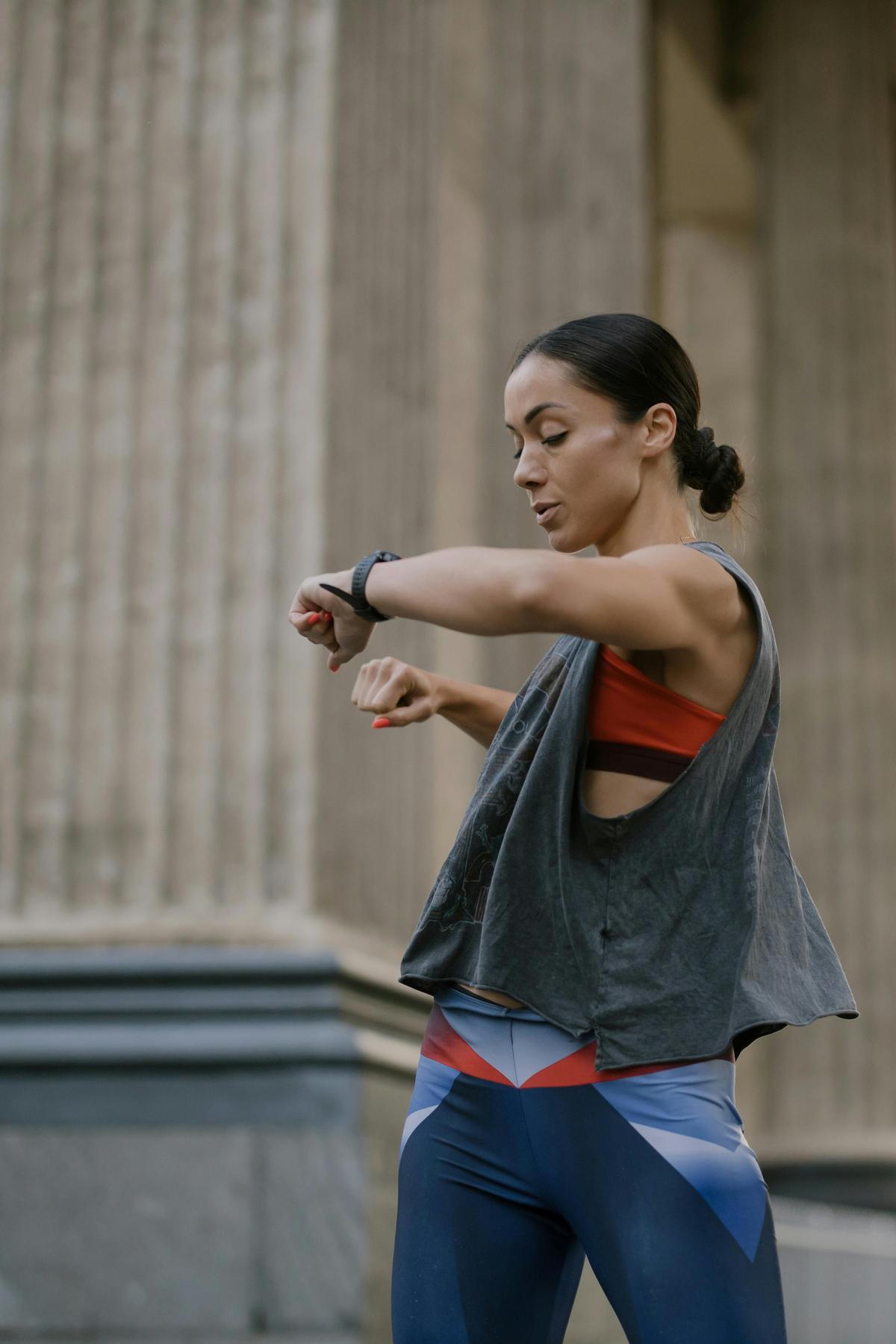
Whether pounding the pavements on your way to work, or pacing around the park, reaching your daily 10,000 step count has been hailed as the holy grail of micro fitness metrics – and let’s face it, the satisfaction you get when your Whoop or Oura says you’ve hit your step goal is pretty addictive.
Getting outside and breathing in fresh air can do wonders for physical and mental health, so it’s no wonder that walking is universally the most popular form of exercise in England. The science shows that regular walking helps to stave off premature death, and reduces the risk of several age-associated diseases, whilst also supporting cognitive and cardiovascular health. And one of the best things about walking? It’s accessible whatever your age and general fitness level.
But trying to hit 10,000 steps may not be the best way to lose weight. Here are the best ways to get more than just a cardio boost on your walk.
Rucking (aka walking with a weighted rucksack or vest) is a way of getting a two-for-one workout that offers both muscle-toning and heart-boosting gains. Whilst rooted in military training as a way of preparing soldiers for long-distance travel, the idea of carrying extra weight to upgrade walking workouts is lauded by the likes of celebs like Jessica Biel and Kylie Jenner because it engages your whole body, tightening your core and legs, whilst working your back and shoulders for a top-to-toe workout. The added weight also effectively increases your heart rate and calorie burn.

Kylie Jenner, pictured here in Chanel, is a fan of rucking
AFP via Getty Images
To get started, experiment with different weights – starting off too heavy could increase the risk of injury. ‘Adding water bottles (one litre of water weighs 1kg) to a backpack allows you to keep track of the weight that you’re using. You can also tip the water out if you need to lighten the load at any point,’ explains Carla Khouri, a mountain leader at Merrell Hiking Club, (merrell.com) Stretch before and after and don’t forget to watch your posture throughout your ruck. Happy rucking!
Numerical wellness trends are all the rage on TikTok right now, and the instructional 6-6-6 walking challenge is the latest hype to liven up a humble stroll. There are various variations of the fitness challenge, but the rules are simple. One way to do the 6-6-6 involves walking for 60 minutes at both 6am and 6pm, with a 6-minute warm-up before you set out and a 6-minute cool-down when you come to the end of your walk. If that sounds like too much time and effort, a more manageable variation entails a 60 minute walk either at 6am or 6pm with a warm up and cool down either side. ‘Whichever version of the trend you try, the key here is the consistency and discipline to not miss a day and keep the momentum flowing,’ explains Kian Patel, founder of walking community All Terrain 95, (@allterrain95).
Setting yourself a morning fitness goal is a great way to take advantage of the brighter early mornings and crush your step goal first thing, whilst ending the working day with a walk can clear your head. There’s also the option to change up your routes and pace to add variety to your workout.

Walking 10,000 steps isn’t necessarily the best way to lose weight by walking, experts say
Pexels/Ketut Subiyanto
Yes, it sounds like an oxymoron. But the latest fusion fitness workout is walking yoga. Google searches for walking yoga have increased by more than 5000% in the past few months, with people looking for a way to be present whilst toning, strengthening and increasing flexibility.
Walking yoga is a low impact workout, that weaves in walking with breath work and yoga poses and it’s a great workout if you spend most of the day hunched over a laptop. The idea is you take a mindful stroll, paying attention to your breath and stride and introduce yoga postures as you walk such as side stretches and gentle twists. You can then find a quiet spot and try holding simple standing postures like tree pose, warrior pose or mountain pose which aid balance, strength and stamina.
Add a burst of speed walking
Going for a nice walk, is just that – nice. Going for a speed walk elevates your workout to burn more calories and improve cardio health. Fast paced walking, (a hybrid between a jog and a stroll) has also been shown to lower the risk of premature death by up to 11 per cent. Start off with a slow pace to warm up your muscles before increasing your speed. Your breathing should be increased, but you still be able to hold a conversation. At a brisk pace, speed walking can clock up around 4 miles per hour and burns over 400 calories.

Add fast-paced walking into your commute
PA Wire
Nordic walking isn’t new, but the outdoor sport deserves a mention because of the full body benefits that strolling with poles offers, alongside the fact that it’s a good option to keep fit as you get older. There are plenty of Nordic walking clubs around the country making powering up with poles a pretty sociable activity too.
If you’re fed up of doing the same routes and pace, getting into Nordic walking can help to shake up your usual routine – all you need is a decent pair of walking shoes and two specially-designed walking poles. The premise is that you use the poles to add intensity to your workout, swinging your arms whilst briskly strolling. ‘Nordic poles provide stability and help to engage the muscles in the upper body and core in addition to your legs. The great thing about the workout is that can help to improve balance, coordination and strength and reduce the risk of falling,’ believes Khouri.





